During my process of selecting a range hood (which took quite a lot of time & energy), I've come across a Range Hood FAQ on this forum, which was very helpful (thanks to Rick Auricchio for the original info, and "hardwarehack" for the repost). However, in my months of searching for THE perfect range hood, I've gained some wisdom that I would like to share with you folks. Hope this information helps someone to find the right range hood!
------------------------------------------------------------
This is an update on the previous FAQ - original text in plaintext, my comments/disagreements in bold.
------------------------------------------------------------
Noise: A sone is a measure of sound level used by appliance manufacturers. One sone is roughly equivalent to the noise level of a refrigerator. Fewer is better. Two things make up the noise in a hood: the greater component is the airflow, which makes noise whenever it must change direction. This happens in the filters, around the blower blades, and in the ductwork. The minor component is motor hum. Thus an external blower will not appreciably cut the noise level: you still have all the airflow.
Have to disagree strongly on that one. Motor hum is not a minor source of noise - plenty of cheaper models out there use motors mounted directly to the body of the hood, in essence turning it into a giant speaker.
High-end Italian manufacturers, like Futuro Futuro, use a sound-absorbing motor chamber, which brings the total noise down to a much lower level - 1.0 or even 0.5 sones. Compare this with the TEN SONE rating I've seen on some cheap models (won't insult anyone by name here), and you can see that good engineering CAN make a difference - up to 20x difference, sometimes!
Besides which, the type of ventilation impeller can make a difference - fan-type impellers create a lot more turbulence than squirrel-cage (side-mount, or "tangential") impellers. Once again, the higher-end manufacturers (Miele, Futuro Futuro) use side-mount impellers. Less turbulence, less noise, happier customers.
Overall, if noise is a concern for you, look for models that have 1.) Side-mount (or "tangential") blowers, and 2.) Some sort of motor mount that reduces noise, by aural baffles and/or preventing contact between the motor and the hood body.
Ducting: The terms ducted and vented appear to mean the same thing, that the air is carried outdoors. A hood that recirculates air back to the room will not remove moisture, heat, or some odors, making it of little use when compared to a hood that vents to the outdoors.
You should always check the manufacturer's specs to ensure that you install ductwork of the proper size. (An oversized duct is generally not a problem, but an undersized one will severely limit airflow.) In many cases, you can install a transition to convert the round duct exit on the hood to a rectangular duct that will fit inside a wall between the studs.
Airflow is measured in cubic feet per minute (CFM), where larger numbers mean more air movement. The rule-of-thumb suggests 10CFM per 1000BTU of burner capacity. Thus, for a 60K-BTU cooktop (4 x 15K), you should have a 600CFM hood. Since you rarely, if ever, have all burners on full at once, you have excess capacity that can be used when you really need it. Most hoods have variable-speed controls, which allow you to choose the airflow---and noise level---appropriate to the task.
Agree 110% with the idea of having excess capacity - if your range hood has enough power to handle its duties at the lowest speed, it will generate less noise.
If you have an indoor char-grill, however, you should double the CFM rating, because grills generate a lot of smoke.
If you have an indoor char-grill, you have to understand that even doubling the CFM won't be enough. (That's besides the question of where are you going to find a 1200-1400 CFM residential range hood?) Grills are the bane of range hoods. Even heavy-duty commercial range hoods don't get rid of all the odors coming from a grill. Ever been in a hibachi house? Noticed the monstrous ventilation systems that they have? Still could smell the meat cooking from the dining room? Exactly.
During my research process, I've called quite a few manufacturers, asking about the best solution (money issues aside) for my 48" Wolf range with a grill. The honest ones told me there's nothing that will be 100% effective for the grill, with different explanations. One guy recommended an add-on backsplash-mount high-speed exhaust with intake out near the grill; Futuro Futuro's advice was their 48" Master wall unit, which has 4 additional filter panels that come closer to the cooktop; and so on, and so on. Not one manufacturer said that, yes, their range hood will be 100% effective in removing the air pollution generated by a grill - and these were high-end manufacturers!
Hood size: If possible, the hood should extend three inches to each side of the range; a 36" range should get a 42" hood. This overhang allows for better capture of the smoke, which spreads as it rises. Typical mounting height for a hood is 30" above the cooktop; if you mount the hood higher, you should definitely use an oversized hood. Island hoods are generally specified with an overhang, because the airflow patterns around the island tend to blow the smoke around where it can miss the hood.
Well-designed (read: real Italian, not "Italian style") range hoods can be an exact match for the size of the cooktop, without any overhangs. The reason is simple: even if smoke/odor drifts toward the side, the [cone-shaped] airflow stream catches it & brings it into the filters. Of course, this requires a powerful hood - Miele DA5190 (625 CFM), any Futuro Futuro (all 800-940 CFM), and so on. Basically, stay away from cheap (300-500 CFM) hoods, and you won't have to worry about overhangs and other space issues.
Besides, the selection of 36" and 48" models outweighs the other sizes among most manufacturers. As an example, let's look at the selection of wall-mount units from Thermador, Futuro Futuro, and Miele (my personal top 3):
Thermador - 5x 36", 2x 42", 2x 48" models.
Futuro Futuro - 32x 36", 6x 48", 6x various other sizes.
Miele - 6x 36", 2x 42", 2x 48" models.
Also, whomever you choose to buy from, make sure to ask about the recommended installation height for their models - most will be within the 28" to 34" margin, but it does vary. One size does not fit all.
Filters: The most common filter is the metal mesh filter, which looks like a cross between a screen and a scouring pad. This filter effectively traps grease, but cleaning requires a little effort. Many filters can be cleaned in the dishwasher, but you often need to find room to fit them in with a normal load. If you forget to plan the dish load to accommodate the filters, it's easy to defer cleaning for too long a period.
Baffle filters are metal plates with slots that cause the air to change direction as it passes through the slots. These are quieter than mesh filters, and cleaning them is easier. Grease typically drains into a trough or cup, which must be emptied and cleaned.
Personally, I don't like the idea of having a "grease cup" anywhere in my kitchen. That's gross. But that's just me ;)
Can't see baffle filters being quieter, either, since air changing direction causes turbulence, which in turn causes noise. So how are they "quieter"?
Besides which, I have not seen ONE high-end range hood that has baffle filters standard - not Miele, not Futuro Futuro, not Broan, not Thermador. Something tells me that if all high-end manufacturers avoid a particular technology, that isn't a high-end technology.
The Vent-A-Hood brand avoids all filters by way of its centrifugal-blower design. Rather than a fan blade, the VAH uses a squirrel-cage blower that slings grease onto the walls of the blower housing. The grease drains into a pan below the blowers, where it is removed by dismantling and cleaning the housing and pan. Disassembly of these parts is easy without tools, and they can be placed into the dishwasher for cleaning.
Without filters, VAH claims significantly increased performance and reduced noise levels. The manufacturer typically claims about a 50% more-effective CFM performance when compared to other hoods. (Thus, a 600CFM VAH would perform like filtered 900CFM hoods.) The noise level is reduced because the air doesn't pass through mesh filters or baffles.
Sounds like an interesting concept, and I like the fire-safety aspect of it. Still, after looking at 20+ other manufacturers, it's a bit strange that VAH is the only one using this approach. Genius or weirdo? It's your call.
Make-up air: When a hood draws air from the room, it creates a lowered air pressure in that room (and the house). In a tightly-built house, the hood performance will suffer as it struggles to draw air out. In some cases, this suction can cause air to be drawn into the house through a furnace flue or fireplace chimney. This can cause carbon monoxide to be drawn back into the house---a hazard.
The solution is to provide make-up air, which can be as simple as opening a kitchen window. In temperate climates, this solution works well. In cold winters or hot summers, however, admitting unconditioned air is generally not desirable. One alternative solution is to install a special intake duct near the range: outside air is drawn in near the range, where it's immediately exhausted by the hood. This minimizes the effect on the room environment. (In winter, cold air is probably a good thing near the hot range!)
A more complicated solution involves a fresh-air duct connected to the furnace air-return plenum. The fresh air passes through the HVAC system, where it gets heated or cooled before ending up in the house. Some systems even have an electrically-controlled damper on the fresh-air duct that opens when the hood is turned on.
Older, "loose," homes simply draw in outside air through every door and window frame. Make-up air will still prevent the intake of dust and drafts from everywhere in the house.
Totally agree. Make-up airflow is an often-overlooked aspect of range hood installation, and you should definitely pay attention to manufacturer's advice, as well as your contractor/installer.
Hints: Turn on the hood before you realize it's needed; by then, you've let smoke escape into the room, where the hood cannot capture and remove it.
Clean filters periodically. A dirty filter limits airflow. As the filter clogs, you must turn up the blower speed, increasing noise.
Absolutely - dirty filters will kill performance. I would recommend looking for a range hood that has an electronic "filter cleaning reminder", or at least a function that shows estimated time remaining until cleanup is needed.
Miele's wall-mount hoods have a function that shows how much "life" is left in the filter before it needs to be cleaned (in terms of operating hours).
But Miele's approach is a manual procedure, so you still have to remember to check it. I personally like Futuro Futuro's solution of having the "timer" button backlight glow red when the 60-operating-hours timer is up. It's a "can't-miss" reminder to toss the filters into the dishwasher, then push the button again when you re-install them.
Last but not least, let me point out that warranty coverage on range hoods can differ quite a lot. Be sure to get the whole story - how long does the warranty last, what does it cover (parts & labor, or only parts?), and what conditions will void the warranty.
Warranty coverage can range from a near-useless 1-year parts-only warranty (ok, thanks for the $20 part, now I have to pay $200 to have it replaced?) to a 3-year warranty that includes labor costs (at least for the 1st year), and/or a lifetime blower warranty (which means the manufacturer is REALLY sure about the quality of their blowers).
That's all for now... would love to hear everyone's comments - agree? disagree? have something to add?
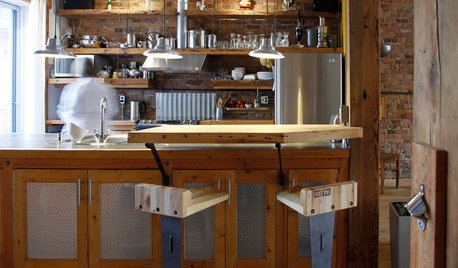
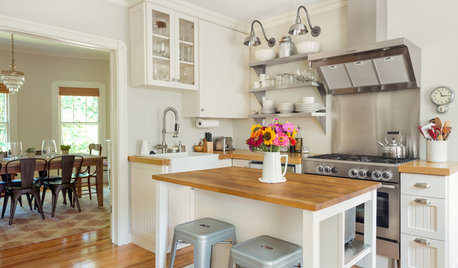
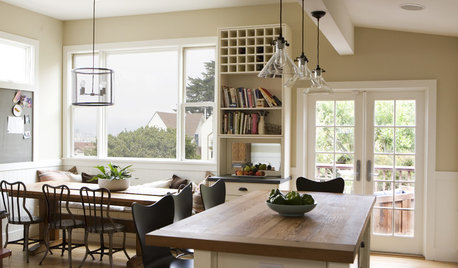
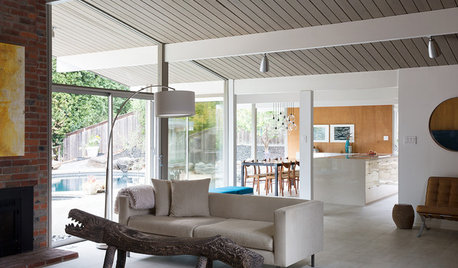
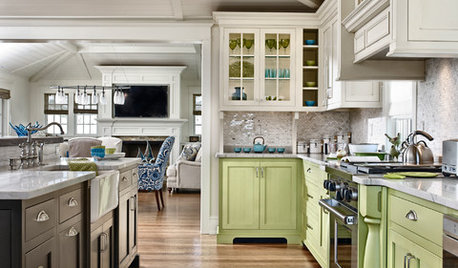
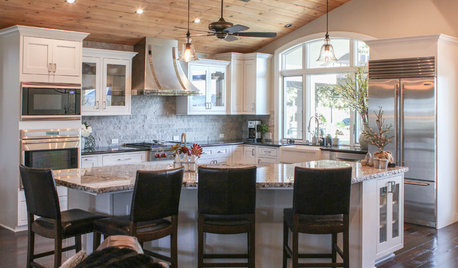
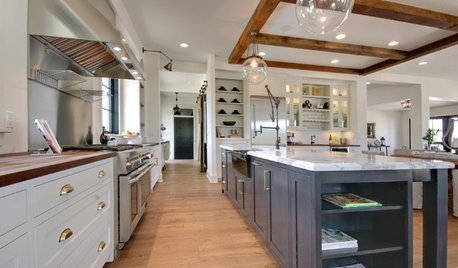

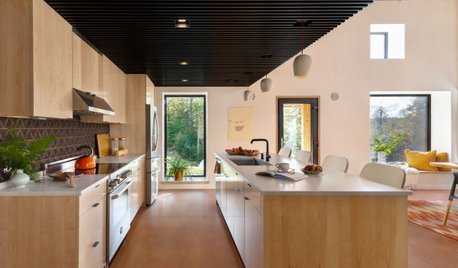
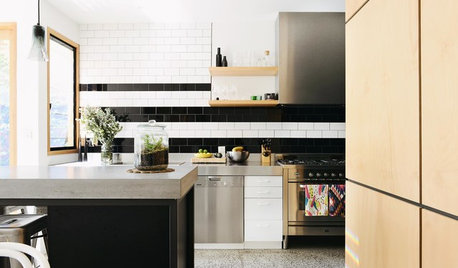




mike634